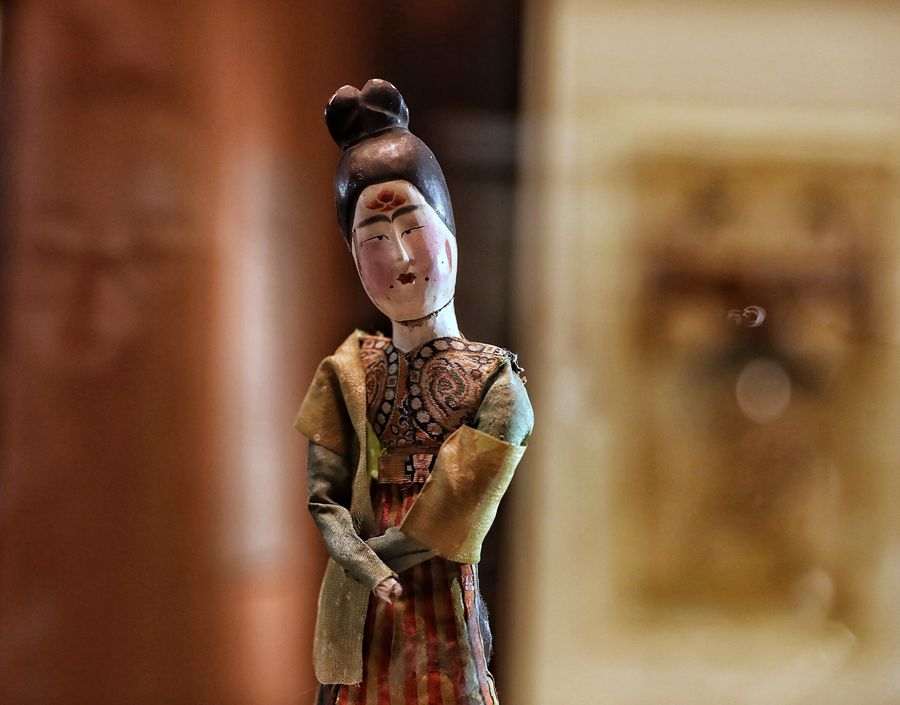 |
|
The huge variety of exhibits provide evidence of the dynamic exchanges between the East and West along the ancient Silk Road.[Photo by Jiang Dong/China Daily] |
Expanding influence
The exhibition also shows artifacts from other Chinese dynasties to highlight the continued exchanges between Xinjiang and Zhongyuan in agriculture, metallurgy, trade and culture.
One eye-catching section shows several textile works which Yu, the former head of the autonomous region's archaeological team, says were mainly excavated from the ruins of Loulan, Hotan prefecture, and the city of Turpan, and date back to the Wei (220-265) and Jin (265-420) dynasties.
One of the brocaded pillows on display demonstrates how popular burial customs from the central plains were introduced into the Xinjiang region. The ji ming zhen (crowing rooster pillow) is believed to have been made during the Eastern Han Dynasty (25-220). It features relief patterns of auspicious animals, clouds and intertwined leaves that are interspersed with Chinese characters denoting longevity in the clerical Lishu style of calligraphy.